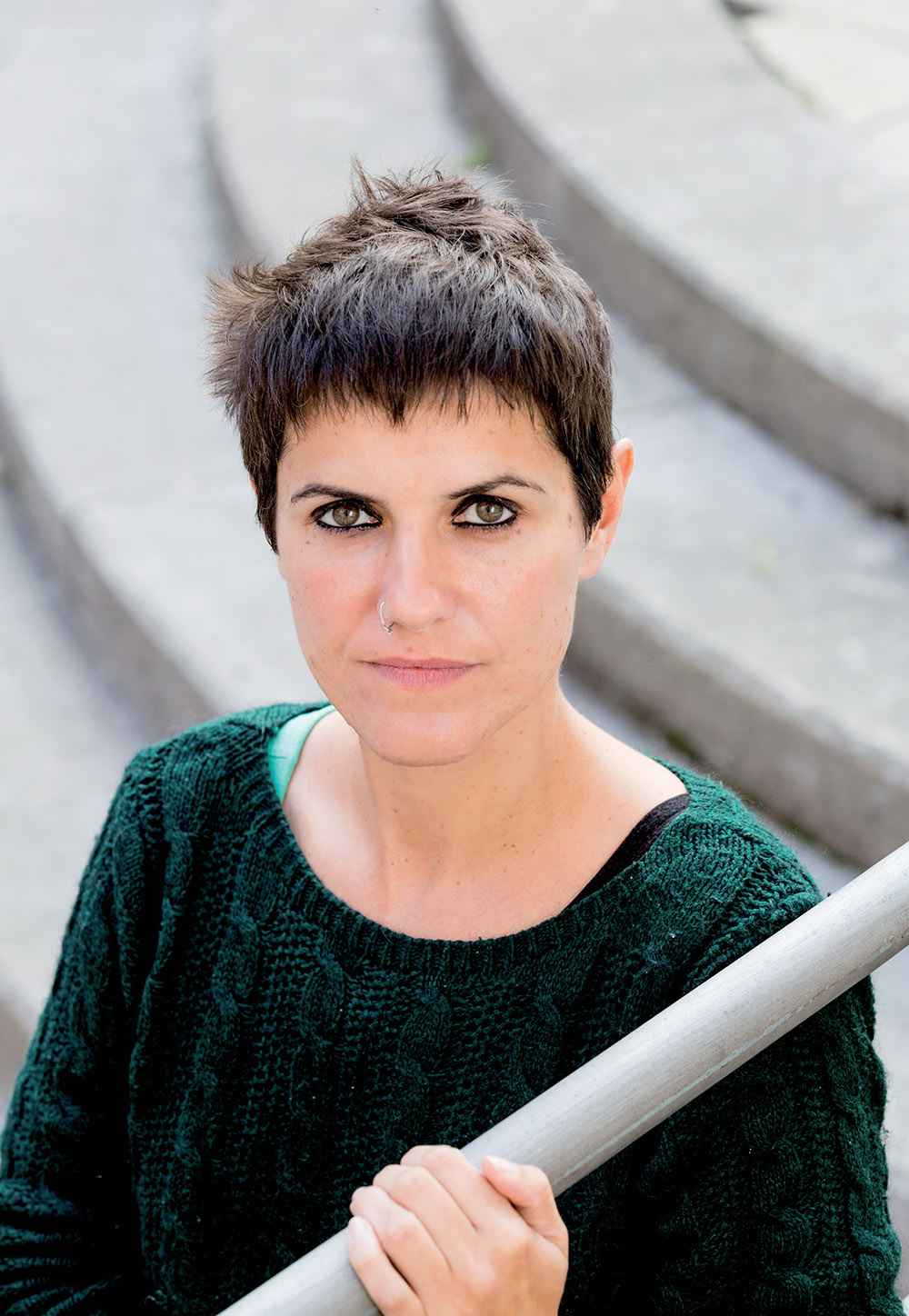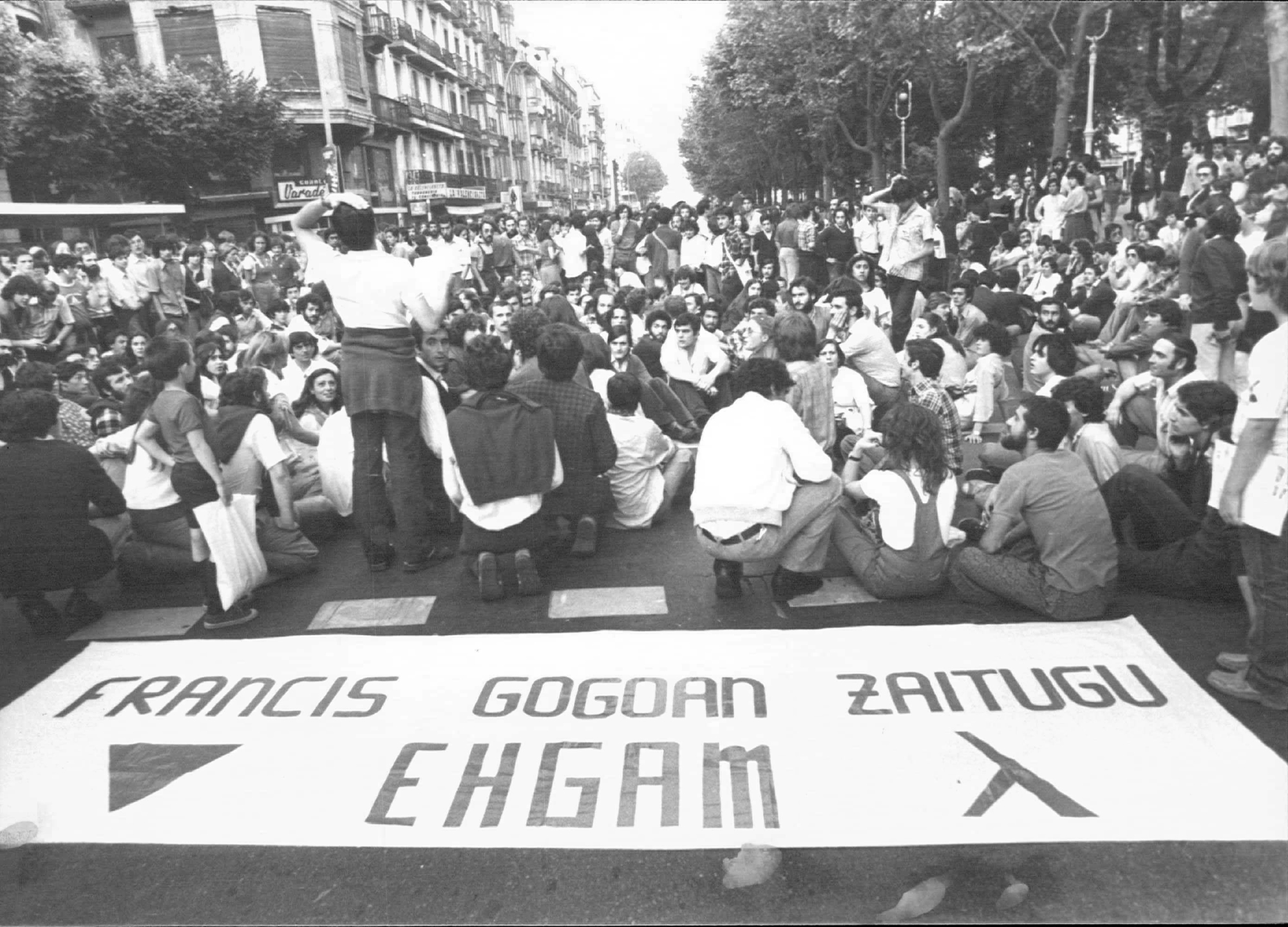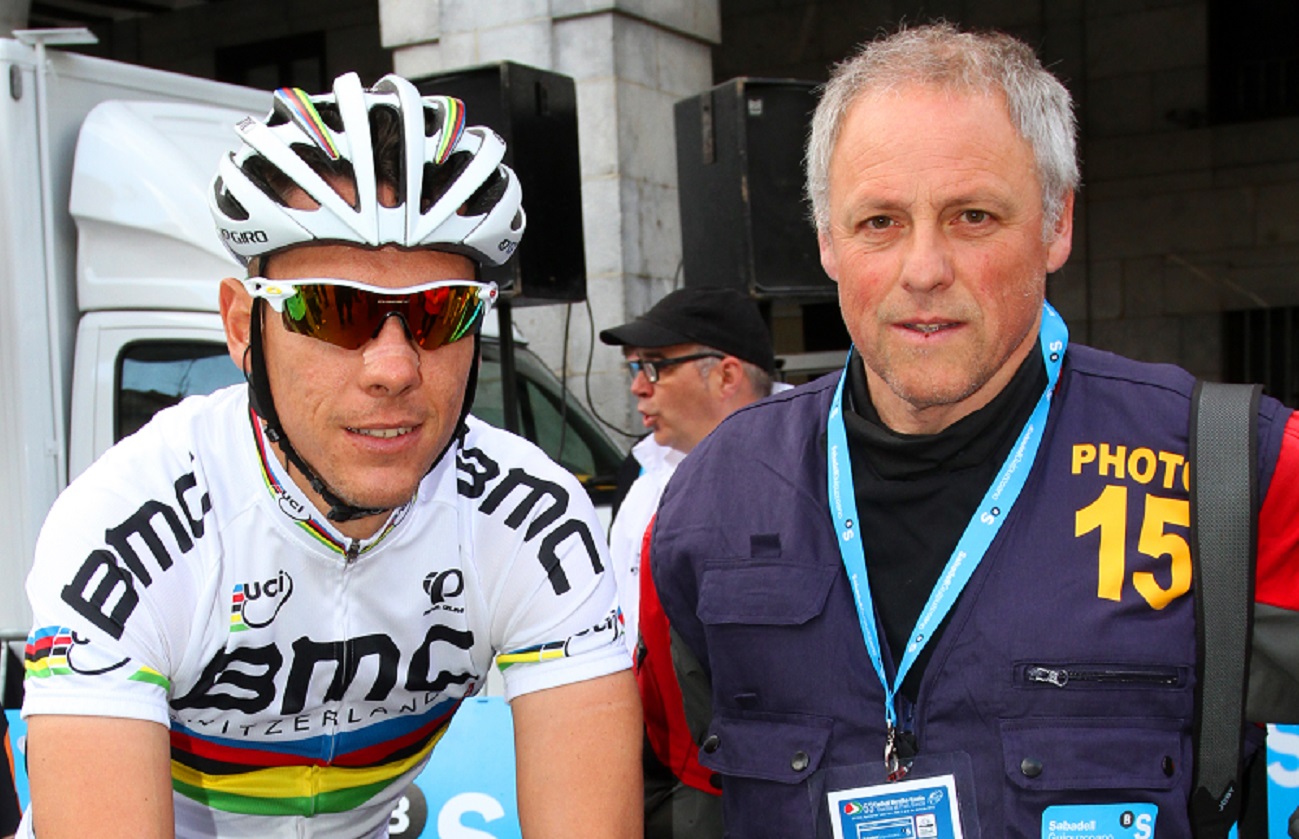"The blows coming from this side of the barricade excite me."
- What are the relationships between women? Can they be healthy as they're trampled subjects? Nagore Legarreta has thrown these kinds of questions into the Hysteron project. The first was an exhibition of twelve photographs. Then, writers, dancers and musicians joined the project and, finally, he has edited all the material inside a can. In addition to talking about the project, we've also talked about how we understand photography.

You start playing with something, out of pure curiosity, and you realize judiciously that you're a very useful instrument to express things that you might not otherwise be able to express. Something like this has happened to Nagore Legarreta with stenopic photography. The jar of cans, photosynthetic paper and the rest of gadgets have become the form of expression. Through them he has built an increasingly personal artistic language. On a Wednesday afternoon, we caught him in a Hernani bar before entering to teach, while the Basque classic repertoire falls from the bafles.
About four years ago, he saw a picture that marked him a lot. Was that the Hysteron Germ?
The head is a cocktail. Inside there's something that jumps you up and you start looking for the keys to answer it. This picture was one of the keys. The women's bodies were deformed, tense. I have always liked to deform reality and the image has attracted me a lot. Then you have to add to the cocktail my personal concerns, my hobby for taking pictures with tin cans… and in the end Hysteron has left.
The project has been developed very gradually.
I started taking pictures with cans in 2009. It happens that many times these techniques stop in the mere artifact: you take pictures with the cans, all right. For a moment, I felt the need to focus on photographic work, what I had to say. I tried to carry out a coherent project. I was invited to a holiday exhibition in the Moscow neighborhood of Irun, a four-hole camera with the help of my father. Through these four holes, the parts of the one that traps in their path are merged and a bit of a cubist result is obtained. Until then, I had used that camera to build buildings, and it occurred to me that it served the same thing to merge people's bodies. I connected to some of the discomforts of my interior, and I threw away that idea for two years reading and taking pictures. In May 2015 ARG de Oñati! I presented the result at the Photography Festival.
The image world is looking for an increasingly accurate definition. In a few years we have gone through HD 4K or 8K. You, on the contrary, have seen that K.A. It uses the technique that has been used since the year 500. Over
time, I've realized that this technique gives me a language that doesn't give me high definition photography, which I've done very well. I don’t mean I don’t know how to use the digital camera, I work on it… but the point is that if you create it yourself, you can do whatever you want. You can create a four-chamber cylindrical hole that would fuse women's bodies. The game opens, the format breaks. That's great.
“Today there is a witch that cannot be seen, but that makes us shrink, that cuts our wings, that sterilizes us”
I wouldn't want to focus on just the technique, but maybe it's convenient to explain the characteristics of the camera that you've taken pictures of Hysteron with.
The can of pretty Arroyabe is five kilos. It consists of four holes – Norte-Sur-Este- and inside a welded nozzle. The photosynthetic paper is placed in the circle. I put a black curtain on Hernani's Iparragirre Shoreline, and I invited my friends, all women, to eat. I set up some figures with the bodies, and then I opened a hole in the can, let the light come in until the paper picks up the image and closed the hole with the tape. Then I turned the can and, following the same steps, I made another figure, until I got four spots. The stains are fused in the corners and a tension occurs between the images. Sometimes they seem to be trying to join, sometimes pushing each other. We don't know very well what it is, war or party.
It mainly refers to relations between women.
I did them when I was in a time of exploration with myself. It was a late puberty, looking for your place in the world, you yourself and also you with other women. I reviewed, among other things, my relationships with the family. It was the toilet, which perhaps began from a dark point, but which has then been very curative. I think photography, art in general, is a unique tool for getting to know oneself. Hysteron means uterus in Greek. Casilda Rodrigañez mentions in a book how a myth of ancient Greece says that hysteria comes from her uterus. And this theory was the great excuse for a large-scale witch roast. My thought is that today there is a burning of witch, more subtle, more imperceptible, but that makes us shrink, that cuts our wings, that sterilizes us. But what kind of relationships are established between these equally sterilized women? Can the relationships between those who are not fully developed and empowered by nature? Can they be competitive?

That's why the ambiguity of the images, that doubt whether they're dancing or fighting.
That's it. Danele Sarriugarte has participated in the project, among others, and has written the text Esklabuak dantzan. There he does a parallelism explaining how slaves were killed before their masters died. There was my fury: one thing is for the blows to come from the other side of the barricade. But the blows that come from this side of the barricade make me furious. Instead of creating bonds of solidarity, rather than joining forces, of targeting the enemy well, I felt that we were doing the opposite in past experiences with other women.
Hysteron would have served you to share that with other women. In
the project, I noticed a tendency to deepen the content of women and men in the technique. I was afraid. Is this subject just my stone? Or will other women feel it the same way? And yes, you talk to other women, and they also feel a fear of the other women, which is after all the fear of oneself. That is where we have a lot to work and to release. But look, for example, at the photo shoot that I mentioned earlier, we were between eight and nine naked women, at the back of the hall of a steelworks, in the sun. This process was very interesting. At first there were the usual shame, that fear of contact in our culture, but that rigidity gradually became a gigantic akelarre, and we all just bathed in the river. Someone told me, "I've come a little tight, but I go home a lot better than I come." That fills me with a lot.
Hysteron goes beyond photographs. Writers, musicians and a dancer have also joined the project. The
work of a photographer can be very lonely, and I wanted to stop looking at my navel to start with a different mood. Fortunately, around me there are wonderful creators. Besides Sarriugarte, Mariano Hurtado, Aida Torres, Beñat Iturrioz, Gorka Setien, Txaro Untzilla… they are all bright spots like me.
Gloss?
(Laughing) I thought we should write a manifesto, the cyclists of our generation. It's a very recognizable way of doing things. The cover of the album of Amorante, by Akauzazte, the design and posters of Ramón Martínez Zabalegi… A mixture of philosophical indefinition Do It Yourself, or something. For the first time, I heard that word from my father. When I was little, I was told that I was a special glitter. For example, because we waited for a visit when I was sent to pick up the uploads of the bedroom, I would put them under the bed. A cleaning apparatus. When I saw Hysteron's final result, that golden can, with those handwritten plain letters from Okene Abrego, and in general, with all that inner shame, I said, of course, this is the aesthetics of brightness. That junk, that dirt, the mistake -- I'm drawn to a lot.
By the end of the 20th century, many artists have experimented with the aesthetic of error. For example, in how many electronic music streams, or in the glitch art movement, error isn't something to eliminate. From the moment it appears in the process it is part of the work. Also in your case? The
key is often the repetition and control of this error. Since I've never been an illustrator of photography, either in technique or in currents, I've searched for those cave methods, because I didn't know how to do things any other way. There will surely be a thousand easier ways of working, but I have always used the most difficult and the most wrong. For example, because the cans have to change paper in the dark, I would get into a plastic bag. August in Morocco. I had a red lamp made from a pile of glue that my father had hung me from my neck. It comes in at 40 degrees inside that bag. You'll start sweating, sweat falls on paper, all the paper comes out full of stains, many of which are fingerprints.
A way to incorporate the labor force into the job site.
I think so. Maybe someone would say that it doesn't work. Yes, but I remember the bag and the heat past, and all the difficulties I’ve had… and it also gives something to the photo. Instead of removing, add. When a mistake happens to you, you realize it may help you tell something you wanted to tell. So, you repeat and develop it.

In your work, chance has a lot of weight. The artist prepares the artifact and then whatever happens...
Yeah, but that's not something I've invented. William Klein, for example, claims randomness or confesses without embarrassment that hides him without looking at the camera. It's a way of working, and if you think about it, it's not absolute luck. Not all that happens to you is a fluke. You mark a framework and improvise it within it. Just like in jazz music, you set some parameters to see what's going on there.
Do you intend to continue in this language?
Yes. With Hysteron I pulled stones out of my backpack and now I feel much faster. Imagine, I've started taking pictures of colors. Four or five years ago, we started arranging photo tours in India, and because I didn't want to bring a great gadget, I created a camera made with a box of matches. I put a reel in, and as I go back with a tweezer, I can take about 20 pictures, instead of changing the paper every time. Now I want to start celebrating my life. Life and death. As I have learned in India, everything is one, and death is not something to be avoided. There's a band called Dirty Three that's been touring with Nick Cave. I've also found my Dirty Three, and I want to keep creating a music band by presenting a photograph. This time, with instruments from India. However, just as the photos do not fall into the folklore of India, they are also forbidden to play the music of the place. So I have India. On the other hand, I'm doing a job on the Urumea River. With the cans immersed in the water, I want to turn the river into a subject. We always see it by the river bank, but how does the river see us? There, too, I'd like to form a music band, mixing water and packaging. And finally, I'm doing another project with the Zuberotarra pianist Elodie Baffalio, who will bring the two sides of the Pyrenees together. He is also another sordid: he improvises, knocks the strings with his hands… There is no lack of long-term project. That keeps me alive.























